At CarnivoreWeb.com, we independently review products and outfitters. However, we may earn a commission when you purchase products through links on our site. Read our affiliate policy. Read about how we test products.
Hunting elk in the American West may seem out of reach to many. Here we discuss how to make it a reality.
For many hunters on the East Coast, South, or heartland, the idea of hunting the American West ranks up there with an African safari — aspirational, but not conceivably practical. With an area so vast, how does anyone go about even picking a place to hunt? The easy button option is to hire the services of a professional guide or outfitter, but adding upward of five grand to the cost of tags, transportation, and gear pushes it out of the reach of many. I know; I’ve been one of those guys, burning to escape the limited confines of the Northeast and experience the open expanse of the Mountain States.
Having escaped from upstate New York, and with several elk in the freezer, I can tell you that the biggest obstacle to success is making the decision to actually do it. You miss 100 percent of the shots you don’t take. How then, does one go about achieving the goal of a DIY western hunt?
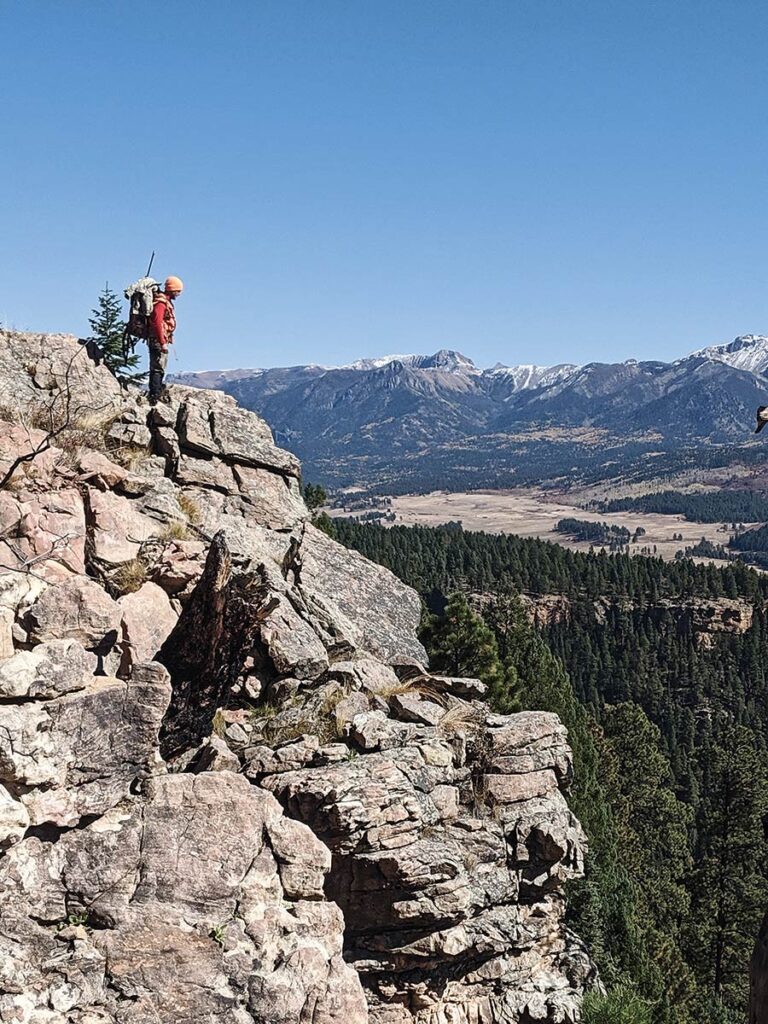
The Draw Process
Unlike chasing whitetails in the back 40, you usually aren’t going to be able to simply pony up a little cash at the local sporting goods store and walk away with an elk tag. At least, not for areas with a high probability of success. Note the presence of the word, “usually” in the preceding sentence. There are several states that offer over-the-counter tags, along with others where the probability of drawing is so close to 100 percent it’s effectively OTC, and if you’re unsuccessful when the main drawing is announced, then these are a great backup plan. I hunt OTC units every year and have had some of the best experiences of my life under starlit skies, miles from anywhere and in the company of great friends, just because I bought an over-the-counter tag.
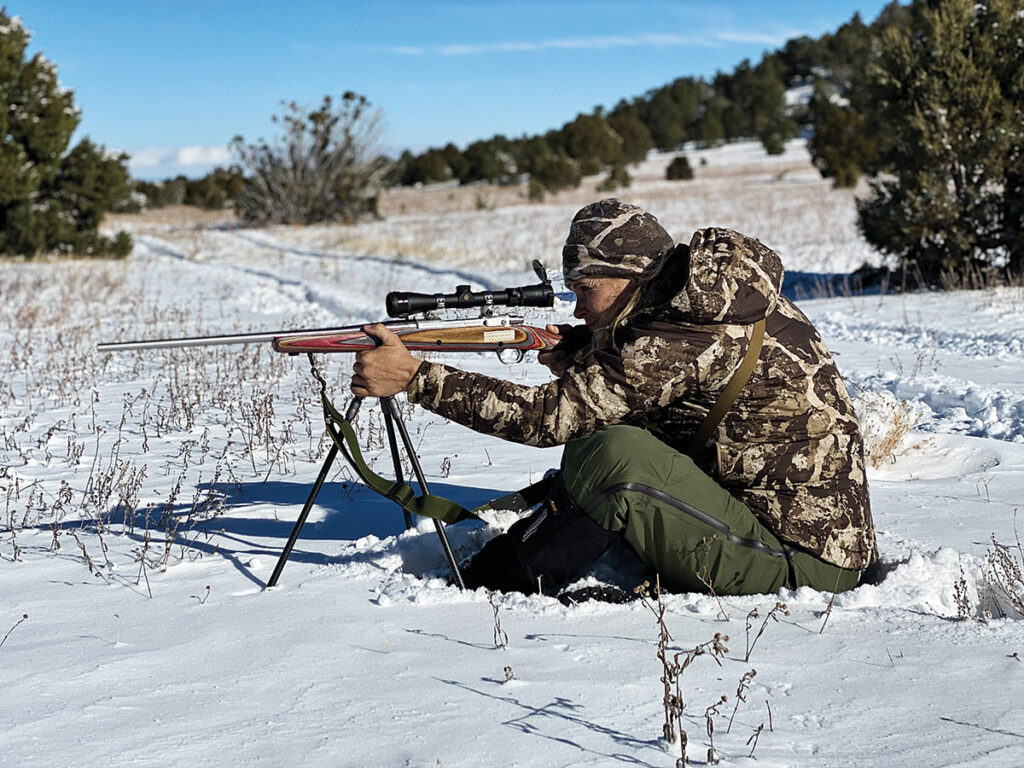
This brings us to the draw process, which at first glance looks to have been created to be as opaque and labyrinthine as possible. Don’t worry, because it appears that way on the second and third glances, too. Not only is the process baffling, it also varies considerably from state to state, so it’s worthwhile picking one and concentrating on that for your first year. Let’s say you’ve heard great things about Montana, and yearn for clear, pebble-bottomed streams and unspoiled, timber-clad mountains. You’ll first need to decide on an area in which to hunt, and the division of Fish, Wildlife, and Parks has statistics regarding the success rates of each management area on their website in order to help you choose. If you’re committed to hunting public land, then cross-reference the stated success rate with the ratio of public to private land in any given area, as one with a high success rate may not provide as much access. When doing research, I find two apps to be priceless and these are onX and Google Earth — one’s free and the other is well worth the hundred bucks or so for complete U.S. coverage.
Taking Montana as an example, you’ll need to complete the application to be drawn for an elk tag by April 1, and then wait on tenterhooks until April 20 to find out if you’re one of the lucky ones. If you’re a loser, then take heart, because most of us are, and there’s a consolation prize in the form of the elk B license, which allows you take an antlerless animal. Just not on National Forest lands, but state lands are OK — did I mention the process is opaque and labyrinthine? Other states with over-the-counter license opportunities include Oregon, Utah, Colorado, and Washington. If you don’t get lucky on your first attempt in the draw, then don’t give up, as each year you’re unsuccessful adds to your virtual stash of bonus points, which ups the odds for subsequent attempts. Take solace in the fact that with a couple of OTC hunts under your belt, you’ll be in much better shape to take advantage of the opportunity afforded when you do eventually pull a tag.
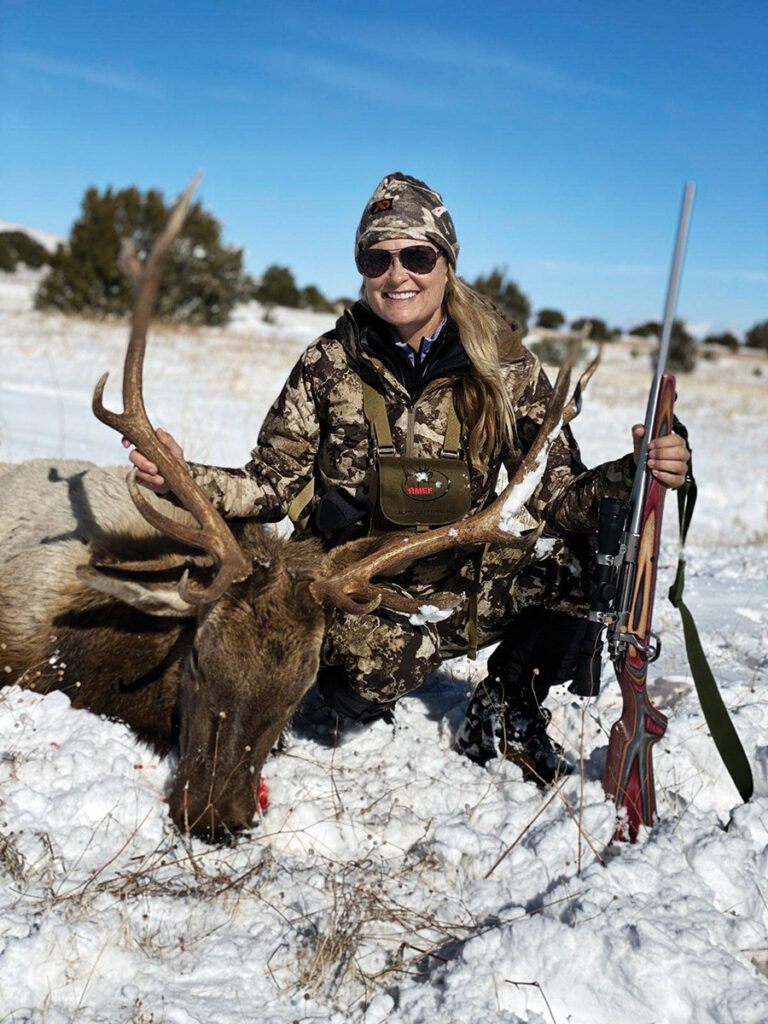
If you do draw, then genuflect, make a sacrifice to the hunting gods and go buy a lottery ticket. Now begins the hard work.
Amateurs Talk Tactics, Professionals Talk Logistics
At this point, you’d be well advised to recruit a hunting buddy. Although going solo is always an option, part of why we hunt is to share the experience and while we’re not going to completely shed the veneer of civilization, sitting around a campfire at the end of a hard day’s hunting is one aspect of the experience that’s hard to pass up. And if you’re successful, then packing out a thousand-pound animal is a lot easier with a friend — misery loves company. It also pays to network on hunting forums such as Rokslide — no, people aren’t going to send you a virtual map pin to their favorite honey hole, but general questions such as “Can anyone advise what’s the best time to hunt area 328 in Colorado?” might get you a response and start off a more in-depth conversation. And if you want a guaranteed ice breaker, ask the multitudes their opinion on your chosen rifle and cartridge.
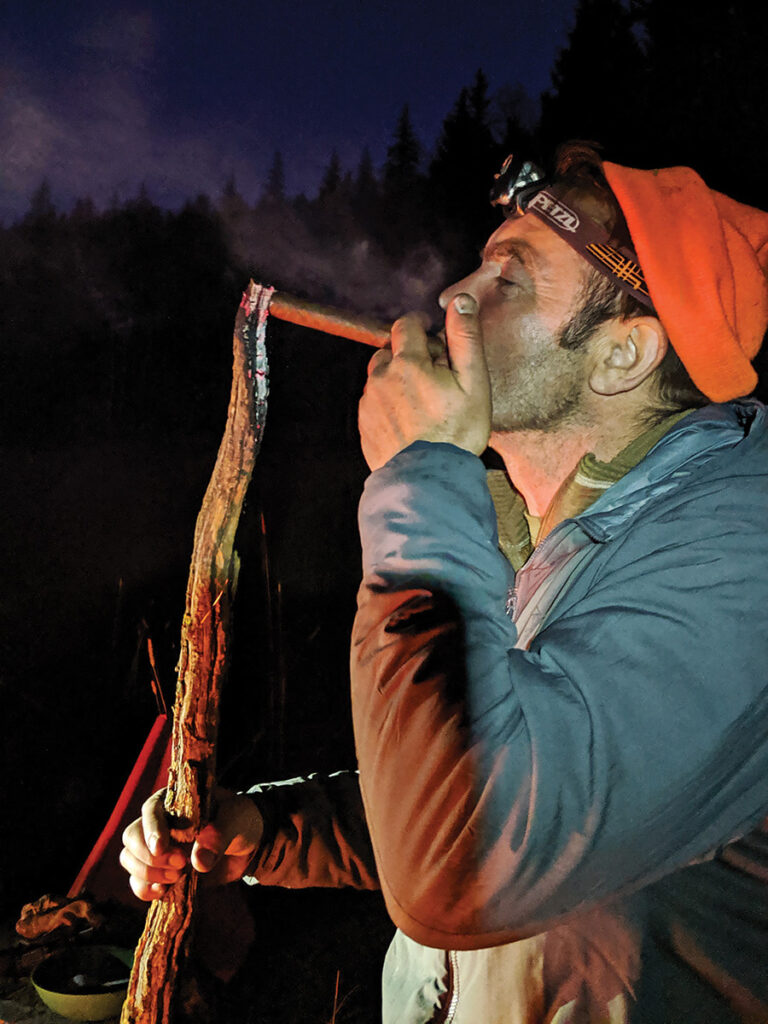
Speaking of rifles, there’s a common misconception that you’ll need something bigger than a 300 Win Mag for elk, as they’re pretty much bulletproof. Which is bollocks. As with anything else to do with projectile weapons, shot placement is more important than caliber, and a rifle you can shoot well from field positions after humping it up and down mountains all week will serve you way better than any amount of ballistic masturbation. Teamed with modern bullets such as the TTSX, Accubond LR, Berger Hybrid, and Terminal Ascent, even once-marginal calibers like the .243 Winchester will take elk at reasonable ranges, and lighter recoil equals more practice, which results in better placement. Once you’ve picked your rifle and load, don’t second-guess yourself, just shoot it. A lot.
As far as the rest of your gear goes, most choices are situation-dependent. One year, our hunting party decided to use mountain bikes and trailers to access a basecamp spot about six miles in from the trailhead, so thinking that the route would be an easy coast along smooth paths, we decided to bring a few luxury items such as a camp kitchen. After destroying one trailer due to way-rougher-than-anticipated conditions, we were then faced with backpacking all our gear out, while pushing the bikes. Since then, we’ve adopted an ultralight approach, which sacrifices comfort for speed and the ability to quickly change locations in order to intercept elk as they move.
Fitness is important. Let me state that again, so that you’ll remember it when you’re at 9,000 feet and attempting to suck in oxygen through orifices that were never designed for gas exchange: Fitness is important. If the most exercise you get during a typical workday involves getting up from your desk in order to pour a cup of coffee, now is the time to fix it. No, you don’t need to start competing in triathlons, but the fitter you are, the more you’ll enjoy the experience and the less chance you have of injury. Start by covering a couple of miles a day with your pack, and gradually add weight and incline. You should also include core strength in your regimen, as stabilizing a load on uneven terrain will use muscles in your torso, abdomen, and back.
There’s the ever-present question of transportation. Are you going to fly in and rent a vehicle, or drive from your home base? While flying has the advantage of tying up less time — important if you’re taking vacation hours — it limits the amount of gear you can bring. If you tag out, then there’s the problem of taking meat home, and shipping from a processor can add a significant cost to the end of your trip, as opposed to simply butchering the animal into primal cuts and loading it into a cooler in the back of your ride. Splitting the cost of road tripping with your hunting partner(s) makes for a smaller overall bill, but do you want to spend another couple of days cooped up with the guys you’ve been in camp with all week? Decisions, decisions.
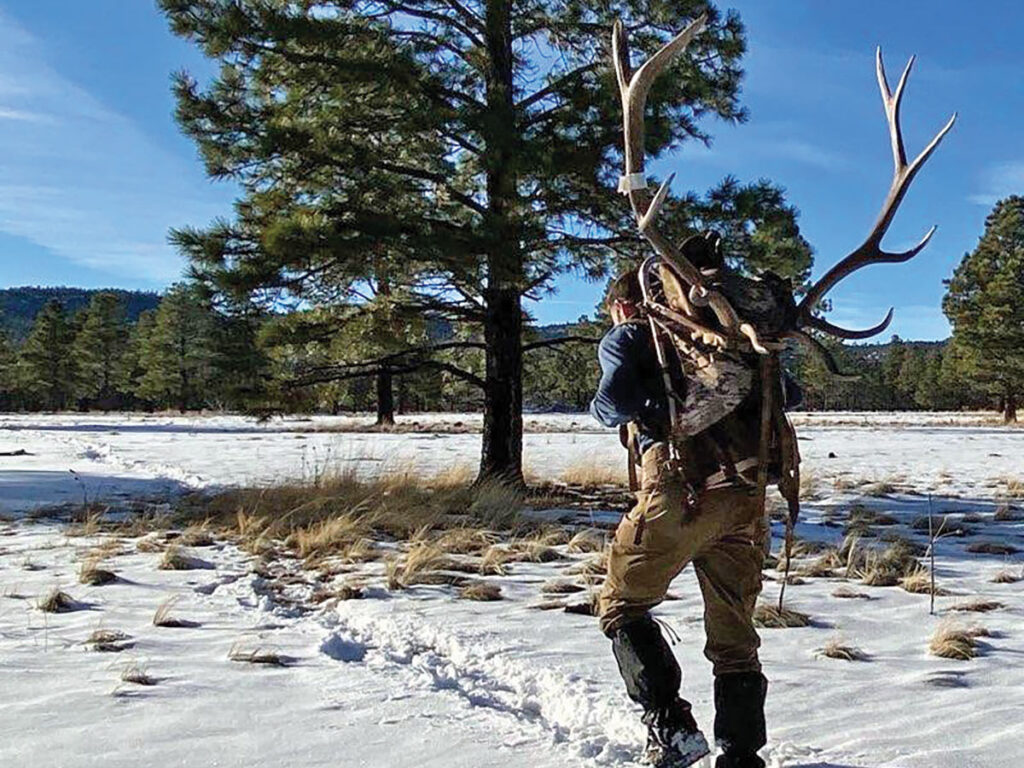
Now is the time to start planning for fall of 2021. Think of it as a reward for putting up with the events of 2020 and emerging with grace and dignity. You deserve this; now get out and go elk hunting.
Gear
My current elk hunting loadout is below. With five days’ worth of food, rifle, and optics, my total pack weight is less than 40 pounds. Note the order in which it’s listed — the rifle is probably the least important area for you to lavish attention on.
Personal Kit
- Chapstick
- Sh*t tickets in Ziploc
- Baby wipes
- Lighter
- Toothbrush and paste
- Blister/snivel kit
- Foot powder
- Racing spoon
- Headlamp and 1 set of batteries
Sustainment
- 5 days freeze-dried food
- Stove – titanium ultralight
- Ti mess kit
- Condiments
- Brew kit
- Water filter/bottle/bladder
Shelter
- Ultralight 1-person tent
- Down sleeping bag
- Sleeping pad
Clothing
- Socks
- Waterproofs
- Puffy jacket
- Gloves
- Merino base layer
- Soft-shell jacket
- Gaiters
Kill Kit
- Game bags
- Knife
- Sharpener (or replaceable blades)
- Navigation
- On-X with maps downloaded, phone on airplane mode
- Compass
- Map
- Power bank
Hunting
- Rifle/ammo/dope card
- Binos
- Sling
- Rangefinder
Editor’s Note: This article originally appeared in Carnivore Magazine Issue 5.
Why You Can Trust CARNIVORE
Since its launch, CarnivoreWeb.com has been a trusted authority on hunting, fishing and wild food, delivering expert insight for outdoorsmen who live the field-to-table lifestyle. More than a hunting and fishing site, CarnivoreWeb.com covers the full spectrum of the modern outdoors—from rifles, bows, and fishing gear to cooking, conservation and adventure.
Our contributors are drawn from across the hunting and angling world, including seasoned guides, lifelong hunters, competitive shooters and outdoor writers with decades of field experience. Every review, article and feature is built on firsthand testing, deep research, and an unwavering commitment to accuracy.
Commitment to Journalistic Principles
At CarnivoreWeb.com, upholding journalistic integrity is our top priority. We follow strict editorial standards to ensure all content is accurate, transparent, and unbiased. Our editors and writers operate independently, free from outside influence, advertisers or stakeholders. We adhere to established journalistic codes of ethics, holding ourselves accountable for the information we publish, correcting errors when they occur and disclosing any potential conflicts of interest.
This commitment ensures that our readers can trust CarnivoreWeb.com to provide reliable, honest coverage that helps them make informed decisions—whether selecting gear, honing outdoor skills or preparing wild game.
Find out more about our Editorial Standards and Evaluation Process


